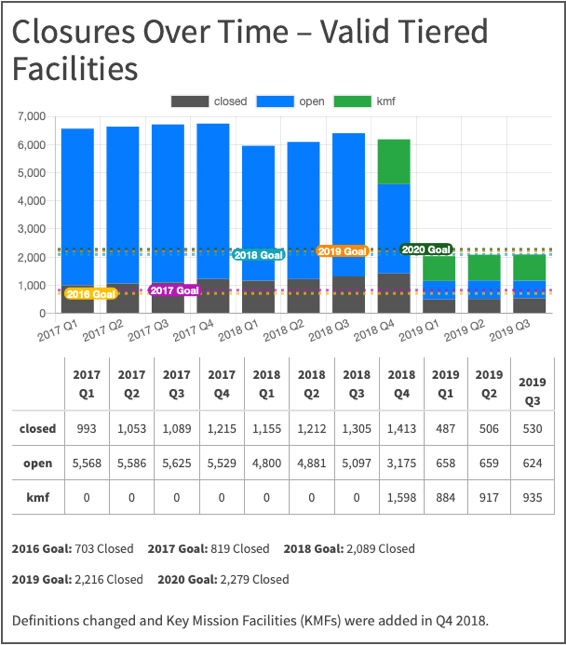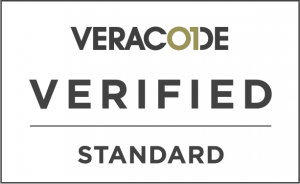
What Is DCOI?
The Data Center Optimization Initiative or DCOI for short is part of the Federal Information Technology Acquisition Reform Act (FITARA) that requires the Federal Government to consolidate and optimize agencies’ data centers. Initiated in 2010 the mandate (M-16-19) required all US Federal agencies to be compliant by 2018. Given the lack of progress in 2017 the mandate deadline was extended to 2020. In that time the development of the Cloud Smart initiative which now encompasses the Federal Cloud Smart guidelines, the Application Rationalization Initiative, as well as DCOI. Some refer to this collection of initiatives as the Iron Triangle for Federal IT infrastructure. With the maturing of the US Federal government’s IT strategy, the DCOI initiative has been further reviewed and now updated with M19-19.

Each Federal Agency is required to monitor and report their progress to their parent Agency and from there consolidated data is reported to the Office Of Management and Budget (OMB) and available to the public as the Executive Summary Dashboard.
The Key Metrics Tracked and Reported in DCOI:
- Availability
- Power Usage Effectiveness
- Energy Metering
- Virtualization
- Underutilized Servers
What changed between DCOI M16-19 and M19-19?
Since the original DCOI was issued, the Office Of Management and Budget (OMB) has determined that although data center closures and consolidations (including migrating workloads to the cloud) should continue wherever possible, a renewed focus on data center optimization and IT modernization is necessary to drive further cost reductions.
Another important lesson was that the performance metrics defined in the original DCOI were confusing, often impossible to practically achieve, and not particularly useful. The use of averages in metrics obscured inefficiencies and many opportunities for improvement. So, a key change in the updated DCOI is that it no longer defines averages and target performance metrics (and their associated complex calculations) for agencies to achieve. Instead, the performance metrics now focus on continuous improvement as the goal for agencies to achieve.
Changes to the metrics tracked are the elimination of facilities utilization, the incorporation of PUE as part of Advanced Energy Metering, shifting server utilization to Under Utilized Servers, and the addition Data Center Availability.
When implementing the DCOI, agencies should always consider their mission goals first, and then prioritize the goals of the DCOI as follows:
- Consolidation and closure
- Optimization
- Virtualization
- Availability
- Advanced energy metering, including PUE
- Server utilization
What are the DCOI Metrics?
Virtualization
With the rapidly growing marketplace around virtualization and containerization, this remains an important area for agencies to realize savings and optimization. The ability to assign resources dynamically based on need is key to delivering timely services, and is an important concept in the Cloud Smart strategy. As such, OMB prioritizes the increased virtualization of Federal systems as critical for IT modernization efforts, to drive efficiency and application portability. OMB expects all new agency applications to use virtualization whenever possible and appropriate.
Advanced Energy Metering
To judge how efficiently a data center is using electricity, the use of metering through Data Center Infrastructure Management (DCIM) tools will determine where efficiencies may be found. OMB will track agencies’ implementations of advanced energy metering by measuring the number of facilities with a majority of the space having this metering, rather than using a combined metric of metering and gross floor area as required under M-16-19.
Server Utilization
OMB requires agencies to identify and report the number of under-utilized production servers in each data center, with the intent that agencies should reduce the number of these servers over time. OMB expects agencies to consider CPU usage and storage space at a minimum. Agencies should use this process regularly, to identify applications that require large amounts of resources seasonally or infrequently which may be ideal candidates to shut down or move to cloud technologies, in alignment with the Cloud Smart strategy. As agencies are performing this rationalization, automated monitoring is strongly suggested to measure application usage to accurately determine needs – such as storage space, CPU, memory, and redundancy – for moving to cloud or otherwise.
Availability
OMB will require agencies to report the planned hours of availability for each data center, as well as any unplanned outages for that data center over the reporting period, also measured in hours. Unavailability will include unplanned outages of a majority of the facility due to disaster, systems failure, cybersecurity events, or other negative events as well as any other hours that would otherwise be planned as available hours.
This metric will track the data center’s availability, not individual server or application uptime or availability.
What Key Questions should I ask from a DCOI vendor?
Does your product address all four DCOI optimization metrics?
For tiered data centers, the target values of all four DCOI optimization metrics (virtualization, advanced energy metering, server utilization, and availability) must be achieved by the end of fiscal year 2020. There are two possible ways to do this:
- Procure a full-featured solution that addresses all the metrics
- Piece together a solution from the offerings of vendors that have more limited capabilities, and hope that they work together, without leaving any gaps and without interfering with each other
Do you have a comprehensive DCIM suite that covers the entire data center life cycle?
Covering the four DCOI metrics is one thing, but a DCIM suite must do much more than that. Your DCIM suite needs to help you throughout the entire life cycle of your data center, from the day you power it up to the day you shut it down. There are different things to be concerned about at different stages of the life cycle. Your DCIM suite should provide the information and management functionality you need throughout all those stages.
Do you have a long-established roster of federal clients who can vouch for deployment success?
Nothing instills confidence in a vendor like a track record of success in providing similar services to similar customers. Doing business with the government is very different from doing business with commercial enterprise customers. A vendor that understands the ins and outs of doing business with the federal government will be a lot easier to work with than one with an existing customer base that is largely or entirely made up of commercial enterprises.
Is DCIM software key to your business, or is it peripheral?
The comprehensiveness of a DCIM solution is likely to depend on its overall importance to the vendor’s business. A vendor founded to provide a DCIM product and totally committed to making that product a success is more likely to develop a product with more depth and comprehensiveness than a vendor whose main emphasis is elsewhere and for whom DCIM software is a minor part of its overall business. Companies that “bet the business” on a single product line have more at stake and are more likely to make sure customer needs are met and continue to be met over the long term.
Is your solution hardware agnostic, or are you trying to sell me hardware along with your software solution?
When a vendor shows up to perform a service at your facility, is it also on the lookout for additional things it can sell you? Not only is that annoying, but it could also mean that the vendor’s number-one priority is something other than meeting the need that you called it for. Look for vendors that are exclusively dedicated to providing you with a DCIM solution that meets your needs.
Do you provide a workflow to link facilities to IT?
Traditionally, IT and facilities are two different worlds, with two different staffs and two different fields of expertise. However, those two different worlds need to mesh together harmoniously. A complete DCIM solution incorporates a workflow that links the two realms.
Do you have prebuilt integrations to IT service management (ITSM) solutions such as ServiceNow, BMC, and HPE?
Your DCIM solution needs to be able to exchange information easily with your existing or planned ITSM solution. Make sure the integration capability that you need will be available.
Do you meet stringent security thresholds certified by a third-party security auditor?
Practically every day, there is a new report of an organization being attacked and sensitive or classified information being compromised. Often, these cyberattacks succeed because of flaws in code. It takes a knowledgeable third-party security auditor to thoroughly vet the code of a DCIM solution and provide high confidence that the system won’t be breached. Ask about relevant certifications and accreditations. Key certifications include:
![]()


Do you provide top-quality after-sales support and professional services?
Talk to some of the vendor’s existing customers to get the answer to this question, preferably customers that are similar to your agency. Ask the vendor for referrals, but also do some investigating on your own so that you talk to some people with a more objective opinion who are not necessarily among the vendor’s “hero” customers for whom the vendor can “do no wrong.”
Do you provide simple to customize dashboards that can be configured to track actual performance against all the DCOI mandates?
If moving toward compliance with the DCOI mandates is a priority, you want to be able to track how you’re doing right now, as well as whether you’re making progress toward the target goals. A dashboard specifically configured to provide that information will make it easier for you to monitor progress and see which of the interventions you employ are most effective.
Does your product have the ability to calculate utilization in a server, and also take advantage of any data that is being collected by other tools?
Processor usage and storage space are key factors in the calculation of one of the DCOI’s four optimization metrics (server utilization). You need a product that can measure it, or at least be able to receive it from an existing tool that already collects that data.
Does your product have native Discovery, Inventory, and Artificial Intelligence from Machine Learning?
The ability to support your Application Rationalization and Cloud Smart goals becomes much simpler if your solution comes from a single vendor that can provide a single source of truth across the agencies IT Modernization needs.
